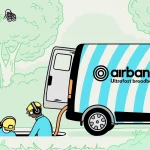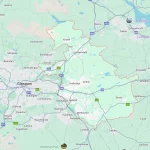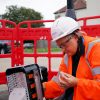Cross-Party MPs Criticise Weak UK Rural Broadband and Mobile
The Environment, Food and Rural Affairs Committee (EFRA) will today publish the outcome of their inquiry into the rural challenges of gaining access to superfast broadband, 4G mobile networks and accessing digital-only services across the United Kingdom, which identifies a number of problems with the Government’s strategy.
At present fixed “superfast broadband” (24Mbps+) coverage reaches around 96% of UK premises (up from 83% in 2015 and potentially rising to 97-98% by the end of 2020), while outdoor geographic coverage of 4G based mobile services has risen to 66% of the UK (up from 43% last year) from all four mobile operators or 91% from one operator (EE).
On top of that Ofcom recently confirmed how the number of premises that cannot get access to a “decent broadband” (10Mbps+) service has fallen to 2% or 578,0000 premises (down from 619,000 four months ago), which is likely to fall again before the Government’s new legally-binding 10Mbps+ Universal Service Obligation (USO) is introduced in March 2020.
Advertisement
Meanwhile Ofcom, the Government and mobile operators are still trying to reach an agreement in order to push 4G or better mobile services out to 95% geographic coverage, which could take the form of either a new industry-led Shared Rural Network (here) or a coverage obligation being attached to next year’s auction of the 700MHz spectrum band (here); potentially a combination of both.
Suffice to say that the picture in rural areas is improving but there’s still a big gap left to fill and it’s going to take awhile the plug, which is something that today’s new EFRA report does focus upon. At the time of writing we haven’t seen the full report but we know that it reaches several key conclusions.
Key Points from EFRAs Report
* Poor connectivity continues to hinder rural businesses and is preventing people from engaging with online public services the rest of the country take for granted.
* The Committee is not confident that the Government has fully grasped the extent of the problem, the scale of the challenge, or the wider cost of poor connectivity for the rural economy.
* The report criticises the current specification for the USO (they want to review it), saying it’s inadequate and lacks ambition for rural areas. They add that it is not truly “universal” due to the restrictions / cost thresholds and its minimum speed of 10Mbps will be obsolete soon after introduction. Most of the USO is now expected to be delivered via 4G, with only a little FTTC/P being involved.
* The report welcomes the ambition of the new Prime Minister, Boris Johnson, to deliver universal full-fibre broadband by 2025 but is sceptical as to whether this new target will be achieved without potentially controversial reforms (join the club). Obviously this was written before the climb-down to adopt “gigabit” instead of “full fibre” terminology last week (here), which is bigger than may first appear.
* The report recommends a “rural roaming” solution is needed to tackle partial “not-spots” in mobile coverage in the absence of a forthcoming agreement between Government and mobile operators. However the idea of rural roaming has previously been rejected by EE because they viewed it as giving a free ride to rivals that haven’t made the same investment (excluding ESN masts – those can be shared), not to mention stifling the attraction of future such investments (NOTE: this is different from the SRN proposal mentioned earlier).
Overall the outcome of this report is almost like a mirror for the many similar reports and studies that have been done over the past few years, including most recently by the Lords Select Committee on the Rural Economy (here), as well as the Rural Services Network (here) and Rural England CIC (here).
Mark Bridgeman, Country Land and Business Association (CLA) Deputy President, said:
“The findings of the investigation confirm there is a real urban/rural digital divide which thanks to the arrival of 5G and full-fibre broadband is likely to get worse.
We’re delighted that our proposals for improving mobile coverage have been backed by the Committee. If mobile operators are to put in place a shared rural network, it must be more than aspirational and should have legally binding coverage targets. If this is not possible, then rural roaming needs to be imposed.
For too long, those living and working in the countryside have been dealt a poor hand when it comes to connectivity, waiting for improvements which never seem to arrive. We need urgent action now.”
Neil Parish MP, Chair of the EFRA Committee, said:
“Despite improvements in coverage since our predecessor’s Report, our inquiry has shown that poor broadband and mobile data services continue to marginalise rural communities, particularly those living in hard to reach areas.
Digital connectivity is now regarded by many as an essential utility, with many in rural areas struggling to live a modern lifestyle without it. There continues to be a lot of frustration felt by those living or working in rural areas – and rightly so.
We support the Government’s commitment to the broadband USO and an “outside-in” approach to full fibre roll out, ensuring that rural areas are prioritised in the future. We also welcomed the Prime Minister’s commitment to achieve universal full-fibre broadband by 2025.
However, the Committee is not confident that the Government has fully grasped the scale of the challenge currently faced and is sceptical as to whether the Government will meet these ambitious new targets without considerable and potentially controversial reforms.
In addition, on the eve of 5G mobile data services, people in rural areas will increasingly feel like second class citizens if they can’t access 4G or even 3G services. Rural roaming must be seen as a solution, if no voluntary proposal is agreed between mobile network operators and Government.
The problem of poor connectivity in rural areas has gone on for far too long. With so many of our public services now delivered primarily online, it is imperative that this problem is resolved and that rural communities are granted the same digital access as the majority of their urban counterparts.”
All eyes will now be turned to the Government’s forthcoming National Infrastructure Strategy (NIS), which the Chancellor (Sajid Javid MP) has already said will this autumn – Brexit chaos allowing – “set out our plans for a step change in infrastructure investment right across the country” (here). We’re expecting a significant funding boost and some extra detail on how they propose to bring Gigabit broadband connectivity to every home by 2025.
Advertisement
We’ll also be interested to see whether or not the Government has made any allowance for the imminent arrival of Low Earth Orbit (LEO) satellites (examples here and here), which could provide a more effective solution than today’s GSO based satellite ISPs for ultrafast broadband connectivity at relatively low latencies. Likewise future 4G and 5G networks might also help to provide an answer.
UPDATE 7:16am
The full report can now be downloaded but if you don’t want to read through that then we’ve summarised some of its other conclusions and recommendations below (excluding the key ones already mentioned above).
We particularly note the first recommendation to harmonise the various different definitions of broadband. The UK government often defines “superfast” as 24Mbps+ but Ofcom and the EU have been using 30Mbps+ for years. The regulator’s choice to define “ultrafast” at 300Mbps is similarly quirky (most tend to view that as 100Mbps+). At least when we come to “gigabit” then the clue is in the name.
Advertisement
One catch with definitions though is that they do vary between old and new BDUK contracts (most recent contracts since 2017 have adopted the 30Mbps+ definition for superfast), which means that one way or another it can be difficult to change things like this later in the game without causing some confusion. Equally what was superfast in 2010 is not particularly superfast today, unless you’re still stuck on much slower connectivity of course.
Conclusions and Recommendations
* To minimise confusion, where possible the Government, Ofcom and the devolved administrations should align their definitions. For example, the Government should adopt the definition of superfast broadband as 30 Mbps.
* Ofcom should continue to refine how broadband speeds are measured and advertised to the consumer, so that consumers are fully aware of the speeds they can get. In response to this Report, Ofcom should update us on whether the changes they have made so far have improved the consumer experience, particularly in rural areas where there are still long copper wire connections.
* The Government must continually invest in rural areas to reduce the disparities in digital connectivity between urban and rural areas, and between rural villages and sparser rural settlements. Previous interventions have, at best, kept the gap stable. The roll-out of new technologies such as full-fibre and 5G mobile data represent an opportunity for a step change, but also a risk that rural areas are left further behind. Therefore, in addition to national coverage targets, the Government should set specific targets for reducing the urban rural divide and put in place the investment to achieve them.
* The Government should further increase its available funding for rural broadband projects, for example through DEFRA’s Rural Development Programme for England. Allocation of funding to the devolved nations should be needs based rather than Barnett allocations; for example, Scotland requires coverage to be provided to the west coast islands as well as Orkney and Shetland in the north, providing additional remote rural challenges. There should be greater transparency on how the UK Government estimates costs for its broadband programme and allocates funding across the UK. The Government should also conduct research into the impact poor connectivity is having on businesses in the rural economy, and the wider impact this is having on the national economy to underpin the case for longer-term action.
* Given the continued shift towards increasingly digital public services, the Government must prioritise delivering improved connectivity for people, primarily in rural areas, with no access to adequate broadband or reliable mobile signal.
* There should be requirements across Government to take account of connection speeds available in rural areas in the process of designing or updating digital public service platforms. Any new digital public service platforms should also be trialled and assessed by rural stakeholders prior to roll out.
* The business case for public investment in rural connectivity is strengthened when account is taken of the additional costs in delivery of services to significant numbers of people in rural areas who are unable to access those services digitally. The Government should therefore collect, publish, and build this data into future investment decisions.
* To protect consumers Ofcom should also set a mandatory requirement that USO provision should not cost more than £45 per month (adjusted for inflation). [NOTE: The USO already requires uniform pricing of £45 inc. VAT].
* In tackling the issue of low take up, the Government should assess why many rural households do not access available broadband services. There may be particular issues affecting rural households, such as additional utility costs (for example, gas and electricity costs) causing affordability issues.
* When setting initial population targets for coverage, Government must have an understanding of how many people and which geographical areas will be left behind and aim to prevent such an outcome.
* The Government must ensure that there is efficient use of public subsidy and that any existing money sitting in the accounts of commercial service providers is used to fund infrastructure upgrades. The Government must also commit appropriate levels of funding across the life-time of the programme in the next spending review to ensure delivery of the ambitions outlined in the FTIR.
* Reform of current wayleave arrangements and delivery of full-fibre connections in new builds is essential to ensure an accelerated full-fibre roll out. The Government should release the outcomes of its consultations, including on ensuring tenants’ access to gigabit-capable connections and new build developments, and announce how it intends to bring forward required legislation as soon as possible.
* Given the relative immediacy of the new target date of 2025, the Government must release a statement as soon as possible to explain how it intends to meet it. In accelerating its targets for
full-fibre roll out, the Government must honour its commitment to its “outside-in” approach to ensure hard to reach rural are prioritised.* Ofcom should report mobile coverage at a lower spatial level and include local 4G coverage targets in addition to national targets. Ofcom should also periodically test providers’ datasets against rural consumers actual experience, rather than relying upon simulated or predicted performance.
* Ofcom should include indoor mobile coverage targets when setting coverage obligations.
* arallel to the talks over the Shared Rural Network, Ofcom should urgently conduct a specific review on the costs and benefits of roaming.
UPDATE 12:06pm
A comment from the UK Internet Service Providers Association (ISPA).
Andrew Glover, ISPA Chair, said:
“ISPA welcomes the Committee’s report and their call for Government to release a statement outlining its strategy for achieving its 2025 nationwide full fibre ambitions. As we said in our letter to the Prime Minister, this is not a can to kick down the road, and the clock is ticking for the Government to take urgent action to ensure that this ambition is realistic.
As the report notes, this strategy requires support from across Government to act quickly and decisively to support industry as they embark on this huge infrastructural challenge. We are also pleased to see that the Committee has adopted ISPA’s recommendations that reform of current wayleave arrangements and delivery of full-fibre connections in new builds is essential to ensure an accelerated full fibre roll out. We look forward to continuing to work with Government to make this a reality.”
Mark is a professional technology writer, IT consultant and computer engineer from Dorset (England), he also founded ISPreview in 1999 and enjoys analysing the latest telecoms and broadband developments. Find me on X (Twitter), Mastodon, Facebook, BlueSky, Threads.net and Linkedin.
« Ofcom – 10Mb Broadband USO Gap Shrinks to 578000 UK Premises


















































Comments are closed